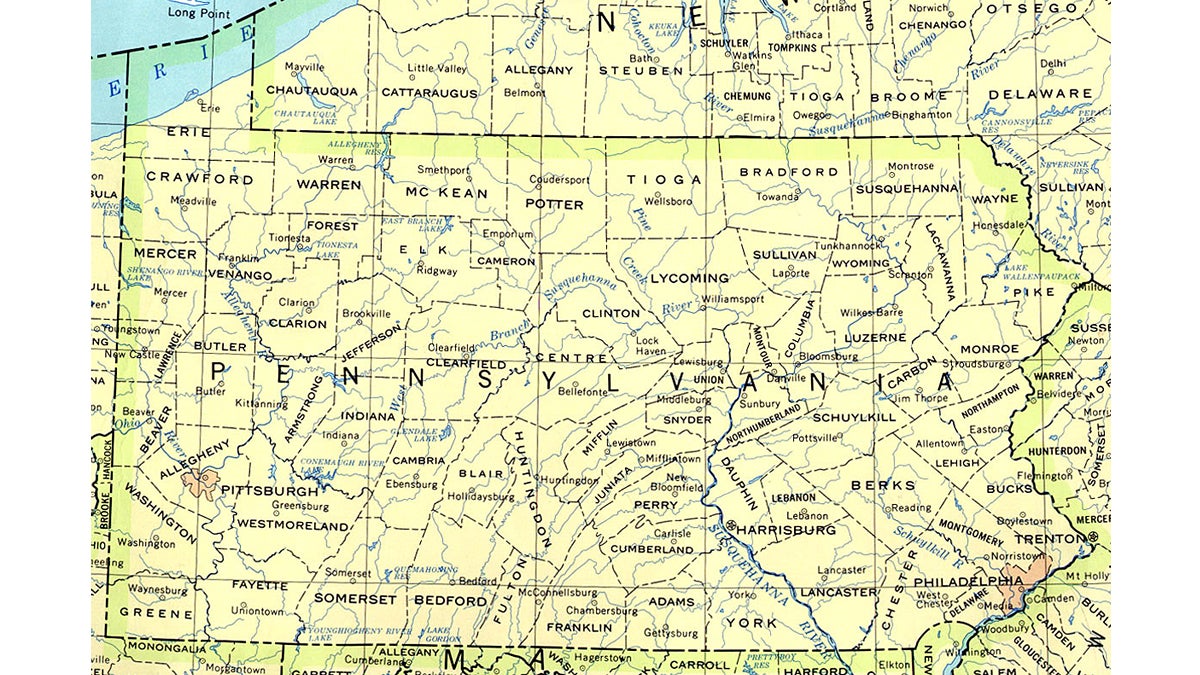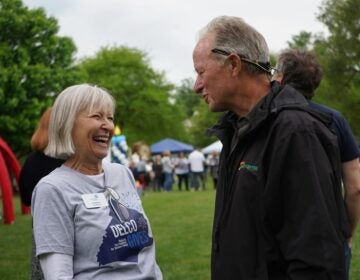Pennsylvania’s population quickly becoming older, slowly more diverse

Map of the state of Pennsylvania showing county boundaries and names, county seats and rivers from the U.S. Geological Survey.
Following national trends, Pennsylvania’s population is getting older and slowly becoming more diverse according to the latest statistics from the U.S. Census Bureau.
Nearly one-third of all Pennsylvania residents were 55 years or older in 2017, ranking it seventh among states for the highest median age in the country at about 41 years old. The national median age is 38 years old.
“This is a peak for Pennsylvania in terms of the population 55 years and older,” said Molly Cromwell, a demographer at the U.S. Census Bureau. ”You can see from the growth of those under 18 versus those 65 years and up in Pennsylvania that the older population is increasing while the younger population is decreasing quite rapidly.”
Michelle Frisco, professor of sociology and demography at Pennsylvania State University says the numbers are due in part to people having fewer children and others moving away for education or job opportunities.
Centre County, home to Penn State’s main campus, and Philadelphia have the lowest median age in the state, while Sullivan and Cameron Counties, in the north central part of the state, have the highest. Allegheny County’s median age decreased by nearly half a year since 2010.
Slightly more diverse
Pennsylvania’s white population was the only racial or ethnic group to decrease between 2010 and 2017. The state’s Asian, Latino and Black populations grew, with the former two accelerating the fastest.
The Latino population increased from 5.7 percent to 7.3 percent, and the Asian population increased from 2.8 percent to 3.5 percent of the state’s total. The white population in Pennsylvania accounts for about three-fourths of the whole.
Frisco says in many Pennsylvania communities that have been historically white, there’s still a lot of fear and anxiety surrounding diversity, which she thinks is unfounded.
“Most of the research shows that as communities become more diverse that actually they become stronger and there’s great economic opportunity,” said Frisco, “not only for new diverse populations, but also for the populations that have traditionally lived there.
Compared to the nation, Pennsylvania lags behind when it comes to diversity trends, Frisco says, although some areas in the state are becoming more diverse more quickly.
In particular, Lehigh and Berks counties showed the largest portion of Latino residents. About one in every four residents identify as Latino in Lehigh County, home to Allentown, and about one in every five residents in Berks County, home to Reading.
Penn State’s Population Research Institute projects that a majority of Pennsylvania’s residents will be of color by 2055, about 10 years after the country as a whole.
WHYY is your source for fact-based, in-depth journalism and information. As a nonprofit organization, we rely on financial support from readers like you. Please give today.






